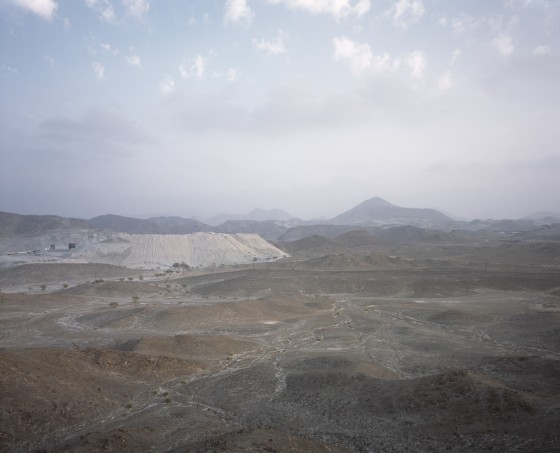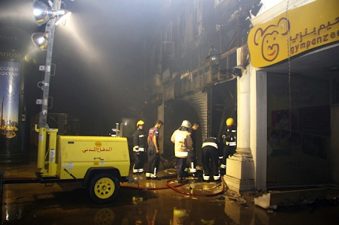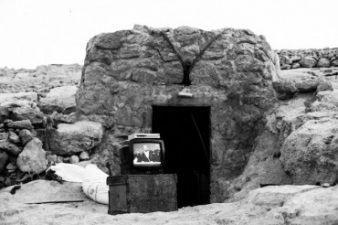 Green Prophet’s resident photographer documents “cut” Hajar Mountains in the United Arab Emirates.
Green Prophet’s resident photographer documents “cut” Hajar Mountains in the United Arab Emirates.
Huge swaths of the Hajar Mountains in the UAE’s northern emirates appear ghostly white when viewed on Google Earth. Closer examination of the satellite imagery reveals large chunks of missing hillside and some sort of quarrying operations, and my recent physical visit to the area revealed these to be mostly rock ‘crushers.’
Simply put, sections of the rocky mountainsides are blown up and crushed down to whatever grade of rubble is required. Dust suppression is an important consideration in this industry, but it’s effectiveness seems limited as a pale grey dust coats the mountains around the quarries.
Most people would agree that the Hajar Mountains are probably not amongst the world’s most beautiful, although many do appreciate their bleak ruggedness.
It’s not hard to understand why some might consider them a landscape worth sacrificing in the name of progress, development and profit. The hills have been reconstituted 100km away into far more useful roads, bridges, carparks, airports, and all manner of concrete structures.
Consider the flora and fauna of this desolate landscape.
Although not the most prolific, they are certainly amongst the most tenacious and ingeniously-evolved. They’re exactly the sort of survivors we will need to draw inspiration from once we have depleted this planet’s resources. But by then they’ll probably be long buried under a pall of grey dust.
Have a look at the GPS coordinates at 25°14’19.72″N 56° 6’33.34″E.
Note from the editor: this photograph is part of a series called “Consumption” that seeks to document consumerism’s impact on the environment. From resource extraction and commodity production all the way down the supply chain to retail stores and waste processing facilities, Richard artfully examines what nature has come to mean in a world that depends on buying stuff.




I guess there must be some glitch in my system, one that misreads the coding for the numbers you posted, and somehow changed them. Or in how Google Earth read them.
It did that twice or three times.
Quite a mystery, since this has never happened to me before.
And when I tried to scan the UAE on Google Earth the other day, I couldn’t zoom in any more than to an altitude of 5 km or so before everything went out of focus*, so maybe the trouble was on Google Earth’s end for a while.
But it worked right this time. 🙂
*Sometimes I’ve hit on places that were pixilated out like that because some region has certain military details or other stuff they don’t want anyone looking at too closely, other times because no-one has gotten around to increasing the resolution from the mass of available data yet.
Thanks.
The pressure to expand industrial attack on the land comes from the growing population. So, to stop such destruction, promote family planning education around the World so the population stabilizes and learns to cherish the land instead of brutally exploiting it.
For anybody unfamiliar with using coordinates in Google Earth, the simplest thing is to copy both coordinates ( for example 25°14’19.72″N 56° 6’33.34″E) and paste them into the search field in google earth. Click search (or hit return) and it will take you straight to that spot.
Hi Chris
Not sure how that has happened. Following are the coordinates to Manilla according to my copy of google earth…
14°35’58.24″N 120°59’3.19″E
The UAE has been 25/55 as long as I’ve had GPS…
Cheers
Richard
“Have a look at the GPS coordinates at 25°14’19.72″N 56° 6’33.34″E”
That took me to the center of Manila, in the Philippines.